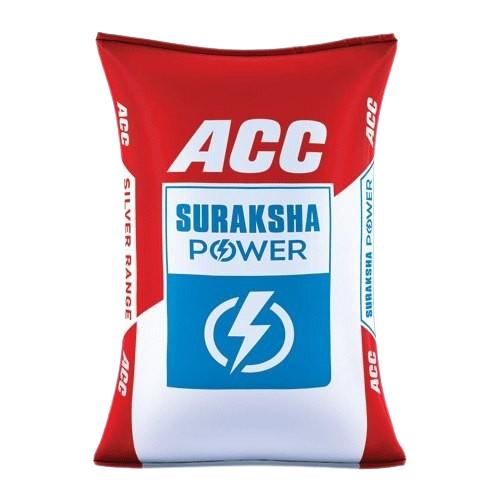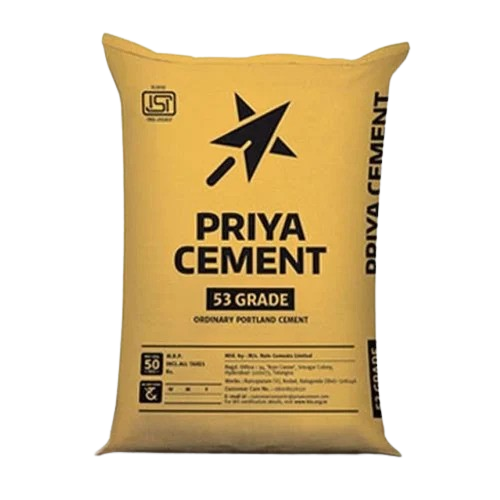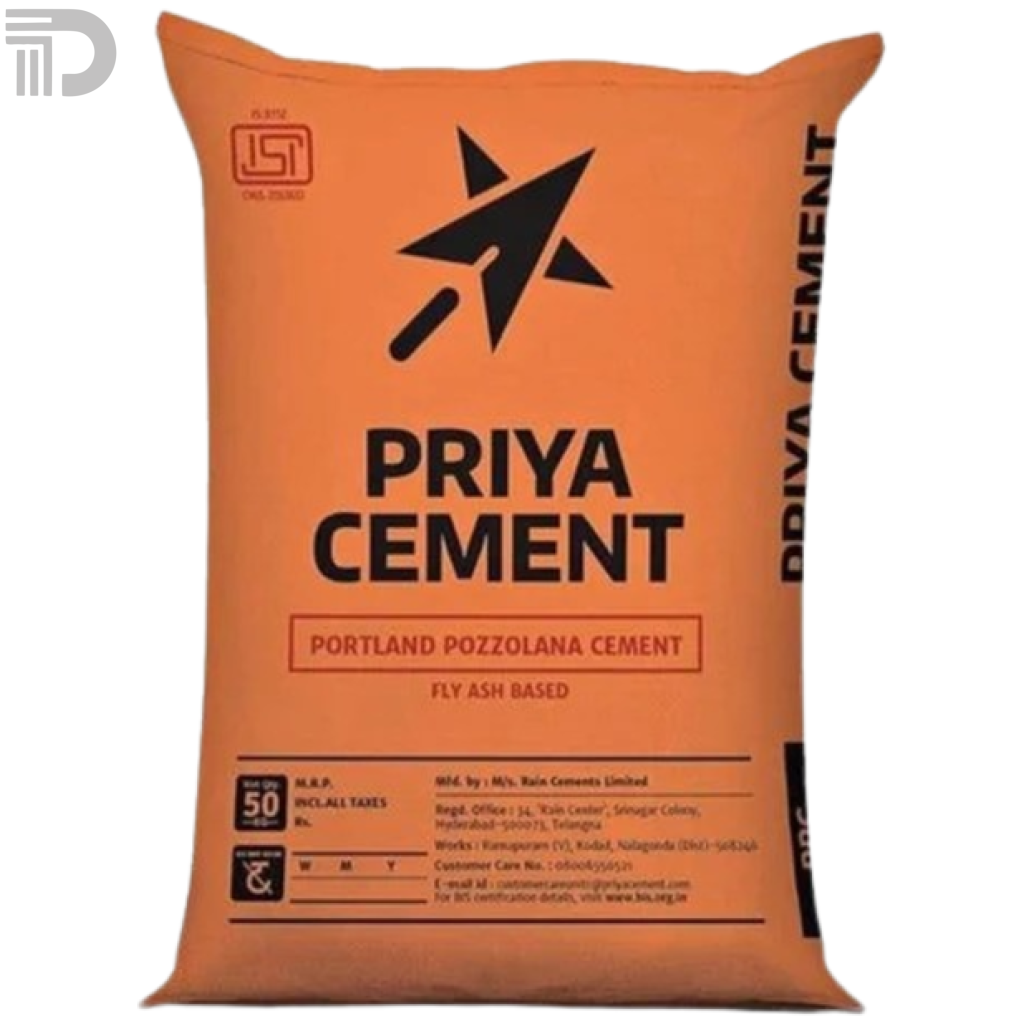ACC Suraksha PPC Cement. PPC Cement is used for brickworks, plastering and all other not structural cement works, it has more flash content than OPC. PPC cement is used where Extra Durability is required and is preferred in mass construction. It usually costs less than OPC. Prices Displayed are per 50Kg Bag. Price of ACC cement changes on daily basis and we have the today’s updated price of ACC cement. Prices are valid only in Hyderabad, India. Free shipping for orders above 50 Bags.
Product Specifications
Additional Information
| SKU | cement ACC |
|---|---|
| Size | 50Kg |
| Brand / Manufacturer | ACC Cement |
| Recommended Deals | N/A |
| Previous Price | N/A |
| Product Price Label | Bag |
| Manufacture’ s Information | ACC Cement |
More about the product(Acc suraksha)
-
Why to choose ACC SURAKSHA ?
-
Safety precautions
-
Steps to use it
- Efficient Heat Resistance 🌞❄️:
- ACC Suraksha exhibits excellent heat resistance, ensuring stability in varying temperature conditions and climates.
- User-Friendly Application 🛠️👩🔧:
- Easy to work with, ACC Suraksha simplifies the construction process, making it suitable for both skilled professionals and DIY enthusiasts.
- Fire Resistance for Safety 🔥🚒:
- With its fire-resistant properties, ACC Suraksha enhances safety measures, crucial for buildings where fire protection is paramount.
- Low Environmental Impact 🌍🍃:
- The manufacturing process of ACC Suraksha is designed to minimize environmental impact, promoting sustainable building practices.
- Enhanced Structural Stability 🏠🏗️:
- ACC Suraksha contributes to the overall stability of structures, ensuring that they withstand external forces and maintain integrity over time.
- Weatherproof Construction 🌦️🌧️:
- Buildings constructed with ACC Suraksha are resilient to weather conditions, providing a robust defense against rain, wind, and other natural elements.
- Versatile Design Possibilities 🎨🏰:
- The flexibility of ACC Suraksha allows for creative design possibilities, contributing to unique and aesthetically pleasing architectural outcomes.
- Seamless Integration with Other Materials 🔄🏡:
- ACC Suraksha integrates seamlessly with various construction materials, facilitating compatibility and structural cohesion.
- Local Community Support 🤝🏡:
- Choosing ACC Suraksha supports local communities by contributing to the demand for locally produced, high-quality construction materials.
- Educational Resources for Users 📚👷♀️:
- ACC provides educational resources and guidance for users, ensuring proper understanding and usage of ACC Suraksha in construction projects.
Remember, incorporating ACC Suraksha in construction projects goes beyond reliability; it's about creating lasting structures that stand the test of time with style and sustainability. 🏗️🌟
- Personal Protective Equipment (PPE):
- Wear appropriate PPE: This may include gloves, safety glasses, a dust mask, and suitable clothing to protect the skin.
- Ventilation:
- Work in well-ventilated areas: Ensure proper airflow to minimize exposure to dust and fumes. Use fans or ventilation systems when working indoors.
- Dust Control:
- Avoid inhaling dust: Cement dust can be harmful to the respiratory system. Use a dust mask or respirator to protect against inhalation.
- Skin Protection:
- Protect exposed skin: Wear appropriate clothing to cover the skin and prevent direct contact with wet cement, which can cause skin irritation or burns.
- Eye Protection:
- Use safety glasses: Protect your eyes from dust and debris during mixing and application.
- Hand Safety:
- Wear gloves: Protect your hands from direct contact with wet cement, which can cause skin issues over time.
- Manual Handling:
- Use proper lifting techniques: Lift bags of cement properly to avoid strain or injury. Use mechanical aids if necessary.
- Mixing Precautions:
- Follow recommended mix ratios: Adhere to the manufacturer's guidelines for the proper mix of ACC Suraksha to ensure the desired strength and properties.
- Avoid overmixing: Excessive mixing can lead to an undesirable consistency and affect the performance of the concrete.
- Water Handling:
- Use clean water: Ensure that the water used for mixing is clean and free from contaminants.
- Preventive Measures:
- Limit exposure: Minimize the time spent in direct contact with wet cement to reduce the risk of skin issues.
- Frequent breaks: Take regular breaks to rest and avoid overexertion.
1.Surface Preparation:
- Ensure the surface is clean, free from debris, dust, and standing water.
2. Mixing the Cement:
- Follow Ratio Guidelines: Adhere to the recommended mix ratio provided by ACC for ACC Suraksha. Typically, mix one part cement with three parts of aggregates (sand and gravel).
- Use Clean Water: Use clean water for mixing. The water-cement ratio is critical for the strength and durability of the concrete.
3. Mix Thoroughly:
- Mix the components thoroughly until you achieve a uniform consistency. Use a concrete mixer for larger batches or mix by hand for smaller projects.
4. Transportation and Placement:
- Transport the mixed concrete to the construction site promptly. Avoid delays, as concrete starts to set over time.
5. Formwork Setup:
- Set up formwork to contain and shape the concrete. Ensure the formwork is well-supported and securely in place.
6. Pouring the Concrete:
- Pour the concrete into the prepared formwork evenly. Avoid segregation, and use a shovel or concrete pump for precise placement.
7. Compaction:
- Compact the concrete using a vibrator to remove air bubbles and ensure the mixture settles evenly. Proper compaction enhances the strength of the final structure.
8. Finishing:
- Finish the surface as needed. Depending on the project, you may need to trowel the surface for a smooth finish or leave it textured for better traction.
9. Curing:
- Proper curing is crucial for the strength and durability of the concrete.
- Keep the surface moist for at least 7 days to allow the concrete to cure properly.
10. Quality Control:
- Monitor the construction process for quality control. Check for cracks, voids, or any irregularities that may affect the integrity of the structure.
11. Follow ACC Guidelines:
- Always follow the guidelines provided by ACC for the specific type of cement you are using. This includes recommended curing methods, mix proportions, and other important instructions.
12. Professional Assistance:
- For large or complex projects, consider consulting with a structural engineer or construction professional to ensure the correct application of ACC Suraksha.
13. Cleanup:
- Clean tools and equipment promptly after use to prevent the buildup of hardened concrete.









